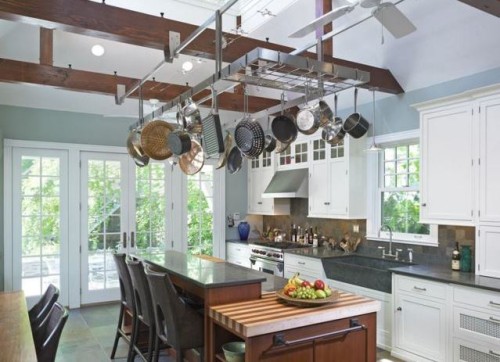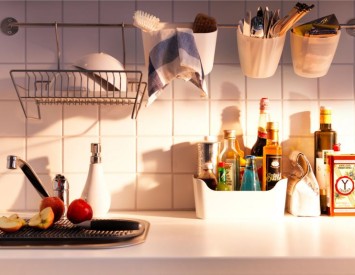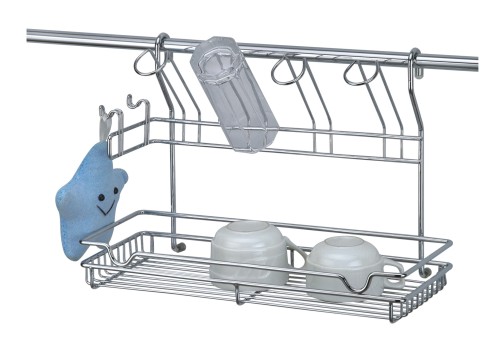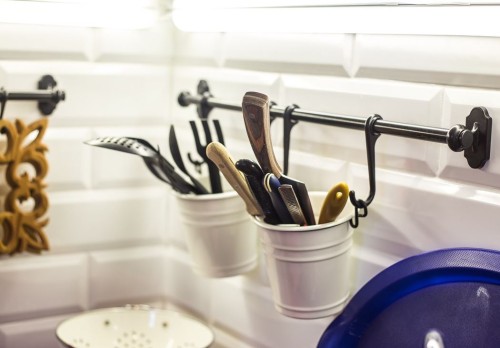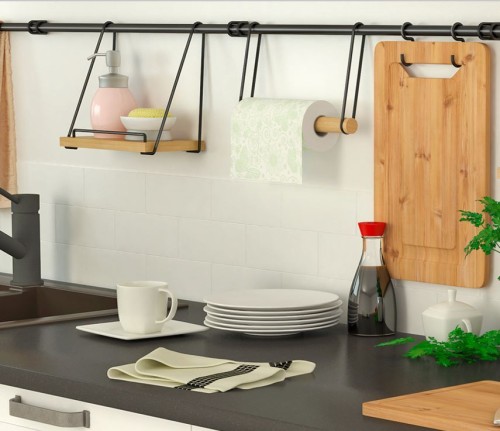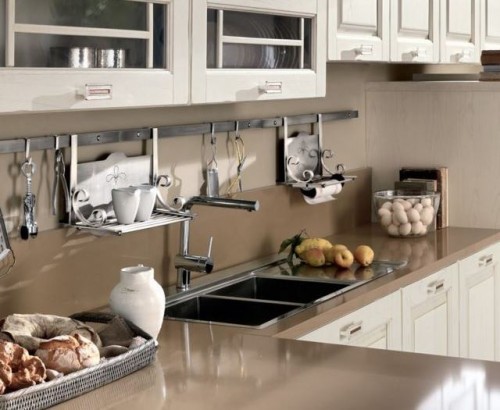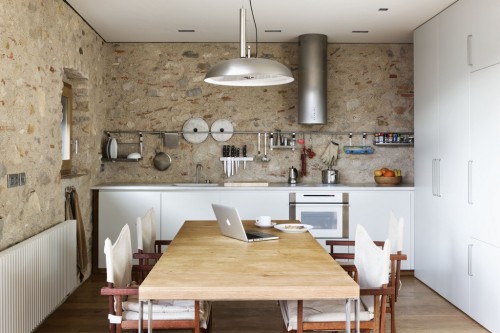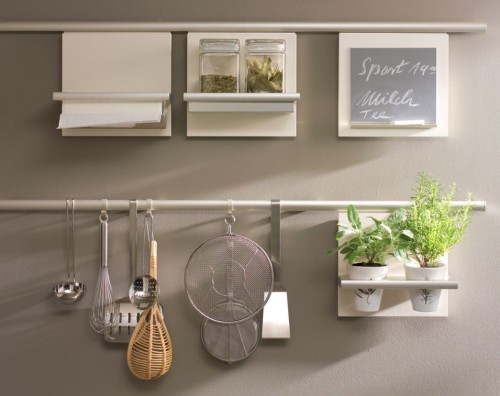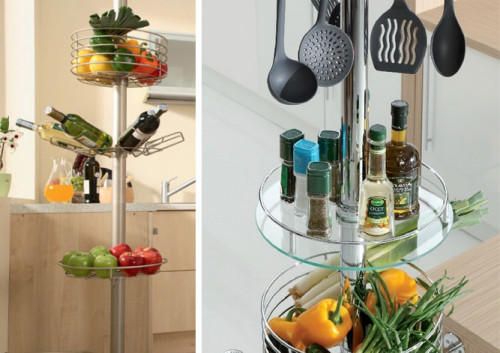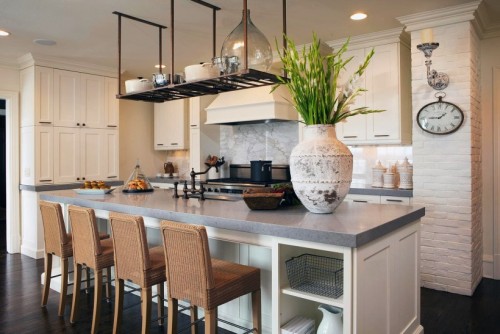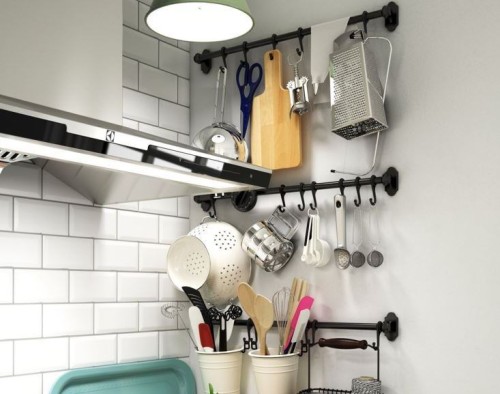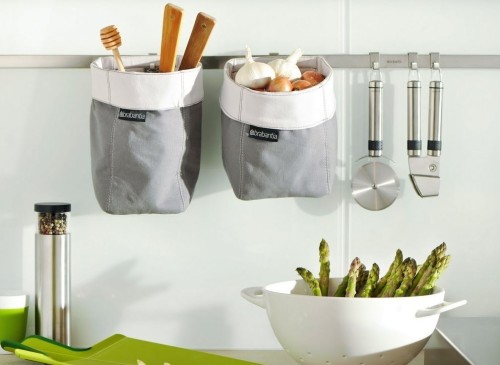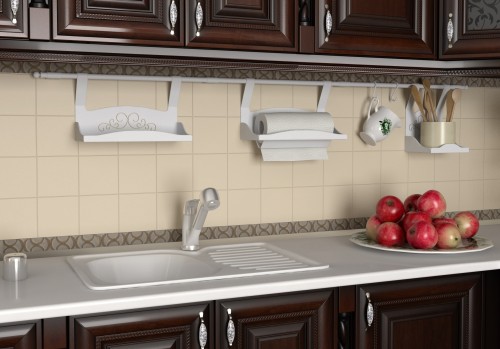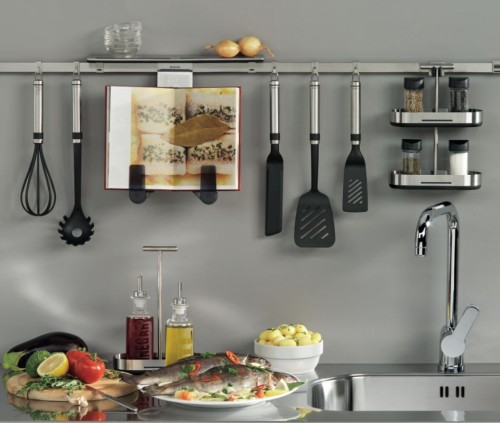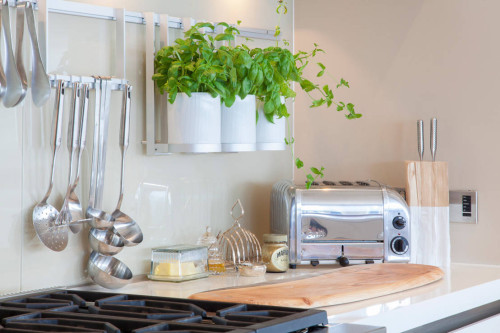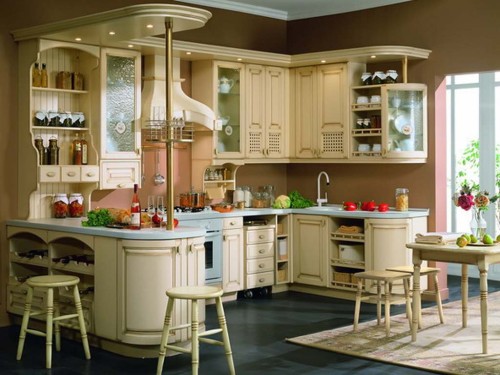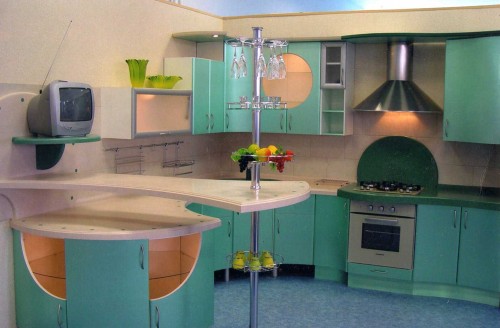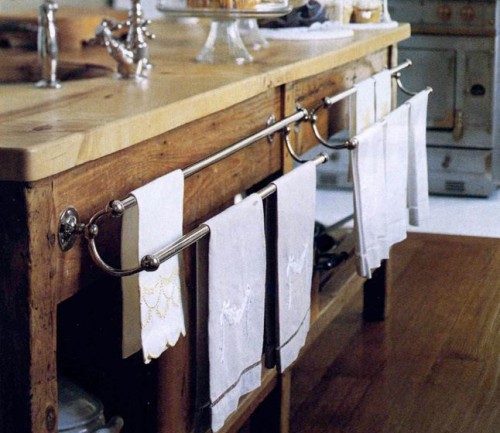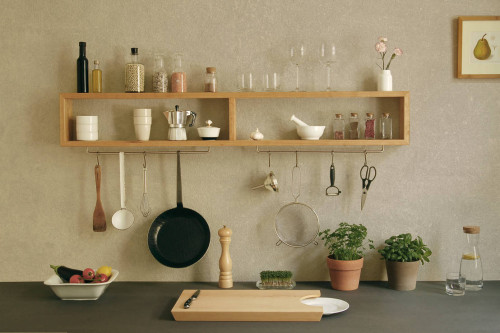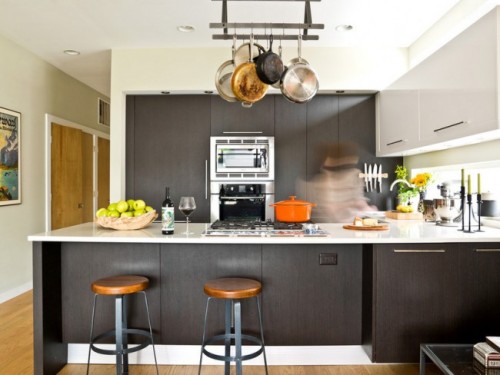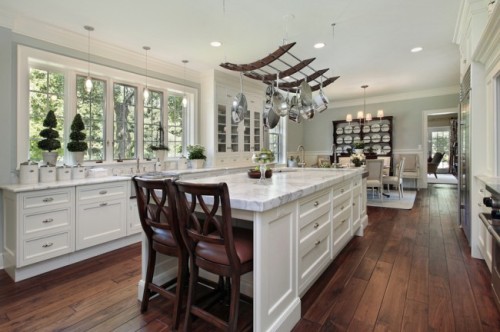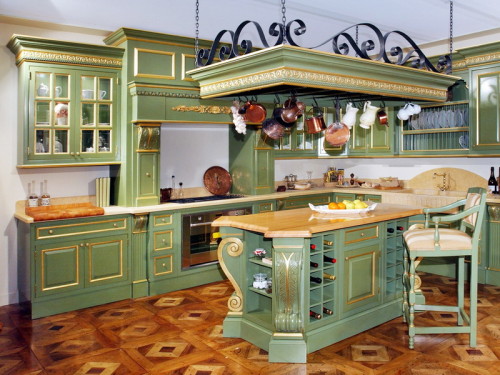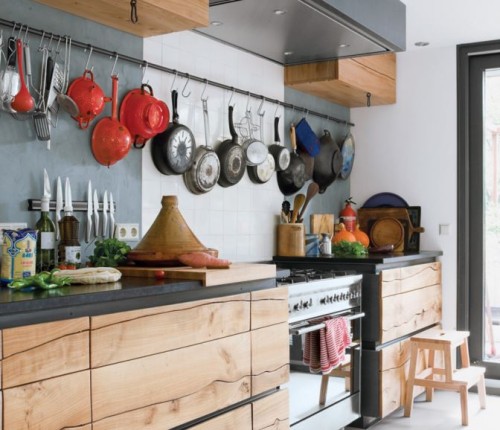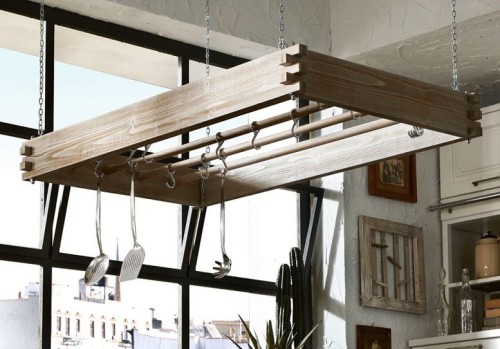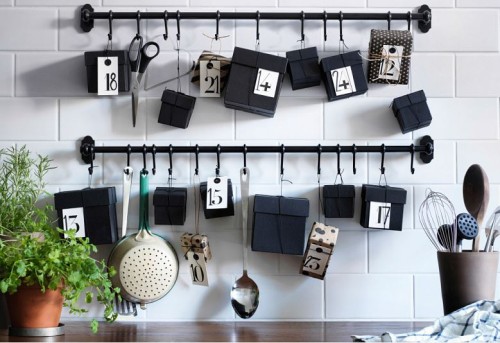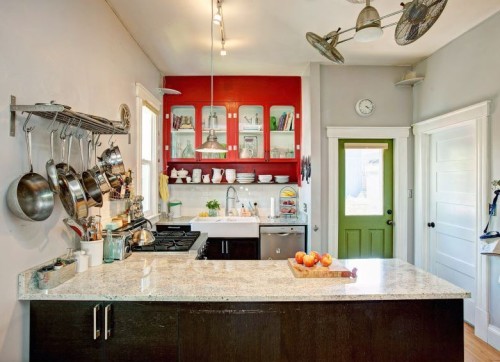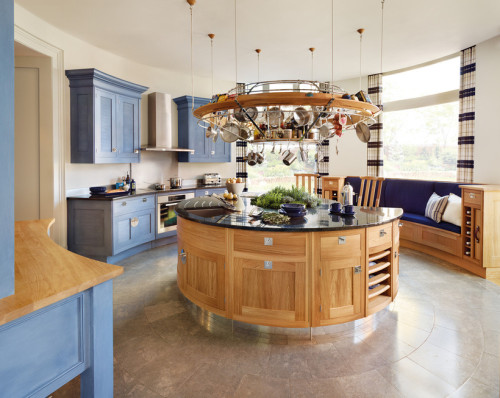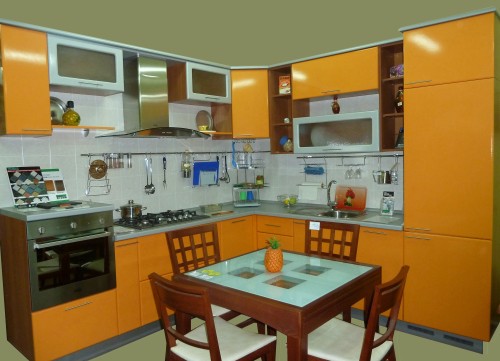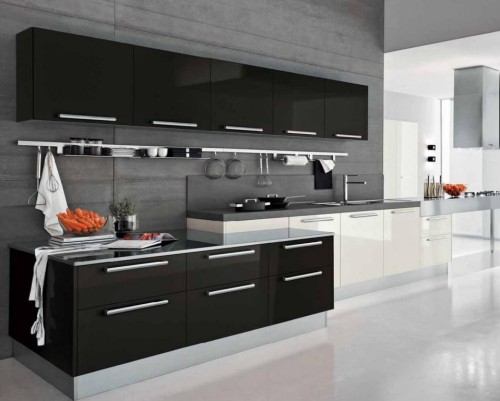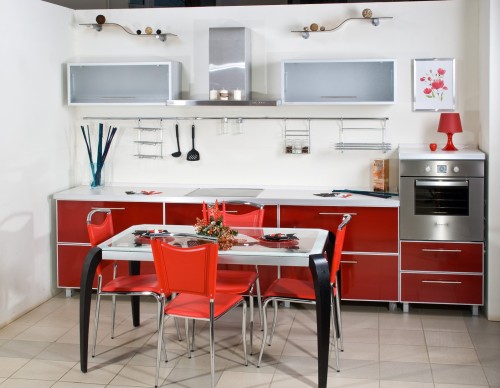For any housewife, the convenience of placing objects and comfort in the kitchen are very important. To ensure a rational organization of workspace, as well as a significant time saving, by installing kitchen rails. On them you can place the necessary for cooking food for the device literally at the length of the outstretched arm. In a similar way, an excessive amount of hinged shelves, as well as cluttration of working surfaces, can be avoided.
Content
Advantages of using rails
For the first time, the rails appeared in bars and in restaurant kitchens. Such designs made it possible to optimize the cooking process and achieve significant savings in the work area. After some time, the housewives appreciated their convenience of use at home. Opening countless cabinets over and over again is very tiring - at the same time, the rail systems installed in the right place provide opportunities for compact placement of dishes, as well as a variety of kitchen equipment and accessories.
The advantages of the use of rails in the kitchen include the following:
- significant savings in space, which is especially important for the kitchen room of small dimensions - rail systems allow rationally used every centimeter of free space;
- convenience and practicality in application, increasing the functionality of the working area - kitchen rails allow you to place a variety of utensils within reach, which is usually used in the process of cooking;
- such devices of simple design will harmoniously fit into any kitchen interior, while looking very modern and stylish;
- the mobility of the railway in the kitchen - if necessary, is easily dismantled and outweight to another place.
Varieties of railings
The name of this device is from the English railing, which means "Reika, Pragel, Rarlier." The simplest structures in the form of hollow pipes of small diameter equipped with holders, as well as hinged elements, occupy a minimum of free space in the kitchen. A kitchen inventory can be suspended on the pipe-overlade on hooks, as well as small mesh shelves in one or two tiers. If necessary, suspended elements can be moved along the crossbars.
Railing configuration is selected depending on personal preferences, as well as on which items are planned to be placed with its help. Most often, the diameter of the pipe of the rail system is 15-32 mm. At the edges, the tube is equipped with plugs, giving it a complete look. Sometimes the pipe in the design of the rails is replaced by a rack in which a groove is provided for moving the elements. The installation of the railing in the kitchen is not difficult - usually it is mounted with self -tapping screws on two side brackets (or with the addition of an additional fastener element in the middle, if the length of the crossbar exceeds 1 m).
Depending on the purpose, the rail systems can be equipped:
- mesh mini-regiments of various shapes-in them you can conveniently place, for example, jars with spices, vegetables and fruits, a mixer or a coffee grinder, as well as soap and household chemicals nearby;
- small dryers for dishes;
- plastic or metal baskets and glasses for cutlery;
- stands for bottles, covers and pots;
- removable or non-removable holes of the S-shaped shape, on which you can hang a variety of spatulas, cutting boards, linen and noise, as well as dishes of relatively small dimensions-mugs, buckets, colanders, pans and small pots;
- holders for towels, breadwoman, jackets, glasses and knives. Inclined stands are designed to accommodate culinary books;
- special holders for bundles (like paper towels, food film or foil) - with a toothed edge that allows you to endlessly cut off paper or foil with one hand.
In addition, decorative kitchen gizmos and souvenirs can be placed on the suspended elements of the rail system. Magnetic rails deserve special attention - it is convenient to fix knives or scissors on them. You only need to bring the metal kitchen device to a magnetized tube, and it will “stick” to it.
Materials of manufacture and design
Pipes and holders for rail systems are usually made of steel, aluminum or brass. Railings made of brilliant chrome metal, as well as stainless steel, look great in the interior of the kitchen, designed in a modern style. Steel designs of rails are the most durable and durable, able to withstand significant loads, resistant to moisture, cleaning and detergents. You can also buy rails for a kitchen with bronze coating, black nickel, copper or gilding. Copper or bronze rating will look harmonious in a kitchen room, decorated in a classic style or country. In addition, wood, multi -colored plastic and transparent glass can be used for the manufacture of rails. These materials provide ample opportunities for decoration.
In order for the rail system to fit perfectly in style, designers recommend purchasing it in the same salon where furniture was ordered. In any case, do not save on the quality of kitchen accessories. High -quality rails retain the condition of the coating for a long time, differ in the strength and ergonomic structure - therefore, it is much more convenient to use them and they will last a long time. When choosing the most suitable design of the rail system, you should focus on the color scheme of the design of the kitchen room and the style of household appliances - primarily a kitchen slab, as well as hoods.
In general, the idea of \u200b\u200bapplying rails is not new. Distributed on hooks, objects of kitchen utensils are characteristic of chuckles in the style of country or Provence. If desired, a well -thought -out system for placing open shelves or racks in combination with rails will help abandon the placement of hinged cabinets on the walls of the clutter and weighting space. In this case, the working area will be staffed properly, kitchen objects are streamlined so as not to create a feeling of disorder. It is not difficult to add coziness to the kitchen by fixing pots with indoor plants or herbs like parsley and basil on the rails. The thematic images or photographs fixed by special holders in the form of clothespins, as well as textiles in the form of small kitchen towels, tacks and napkins, will decorate the kitchen or photographs.
Depending on the mounting method, the following types of rails are distinguished:
- horizontal - the most popular are the designs of rail systems with tubes mounted on the walls horizontally and screwed on the brackets with screws;
- vertical - such storage systems are installed between the floor and ceiling, countertop and hinged cabinets, or countertop and ceiling. Steel rods of these structures are fixed along the edges in the spacer;
- suspended - products of this type are attached to the ceiling. Similar rail systems are used in the kitchen with island layout.
Methods of placing rails
Railing systems can be installed in any comfortable places on various surfaces of the kitchen room. When planning, how to arrange rails for the kitchen, it is worth considering the following. It is most advisable to place such storage systems in the working area of \u200b\u200bthe room - under the hinged cabinets, above the sink and stove.
Most often, the pipe of the rail system is mounted horizontally-it is fixed on the sides with the help of holder brackets, fixed on the vertical surface of the kitchen apron. Such pipes can be built in a line along the wall or in several tiers in the working kitchen area, using the space between floor and hinged cabinets, over the sink, desktop and stove, as well as along the edge of the countertop. The necessary suspension elements in the form of hooks and shelves are hung on a crossbar in one or several tiers (the number of them can be increased over time).
Such designs make it possible to unload the working surfaces of the countertop, as well as washing from the objects cluttering them. As a result, the space is freed for comfortable work and convenient movement in the kitchen. Near the hob, you can place kitchen utensils on the rails, which is usually used in the cooking process (various shoulder blades, noise, lactels), as well as shelves for spices. In this case, everything you need for cooking will be placed at the stove at the length of the back. In addition, compact kitchen accessories can be placed on the railings fixed to the end of the countertop, as well as the side surfaces of the kitchen island, and even from the inside on the cabinets doors.
Very practical in operation are angular rail systems located above the kitchen sink. Next to it you can place dryers for plates, stands for spoons and forks. In the cutting area above the countertop, knives, boards for cutting products, holders for towels and foils will be conveniently accommodated, in the serving area - cups, glasses, kitchen forceps, as well as various devices for the design of prepared dishes.
For vertical rail systems, fixation on the walls is not required. Such designs are installed in the spacer between the surfaces of the floor (or countertops) and the ceiling, or between the countertop and a hinged cabinet. Vertical rail structures allow you to place removable or non -removable elements (shelves, holders) of various configurations at the desired height. Thus, new opportunities arise for the most effective organization of space and design of the room. The vertical rail system can be equipped, for example, holders for glasses and glasses, bottles of sauces and drinks, as well as a stand for fruits. A vertical railing crossbar can be used as a support for a bar ray or for a small table.
Owners of island kitchens should pay attention to ceiling rail systems. The suspended rating is attached to the ceiling by the countertop of the kitchen island or above the bar. Such storage systems allow you to place a variety of kitchen utensils, as well as dishes with comfort. It is convenient to use the rail system placed in the cabinet for orderly storage of various kitchen trifles. It will be necessary to stock up on the desired amount of hooks and suitable suspended elements, and it will be possible to adjust the distance between them and arrange them according to their needs, unlike stationary shelves or boxes. In addition, the rails can be placed in narrow pieces between the kitchen furniture, as well as on the ends and from the inside on the cabinet doors.
You should not place the rails on the kitchen apron behind the hob, since during the cooking process to reach for the necessary devices over hot pots and pans is not too convenient, moreover, it can turn into burns. In addition, it is not recommended to arrange rail systems directly above the stove, since drops of fat and settling evaporation will accumulate on the rods and objects placed on them.
Useful recommendations
The well -thought -out design of the rail systems allows you to place them in various places in the kitchen, regardless of the location of the furniture. Nevertheless, when planning how to install rails, it is worth taking into account the size and configuration of the kitchen room.
In this case, it is necessary to take into account the following recommendations:
- in a small -sized kitchen, many objects hung on the walls will create a feeling of clutter of space. In such cases, it is worth giving preference to simple structures of small size, on which you can place the most commonly used number of kitchen devices (set of blades, knives), as well as fix the shelves for spices;
- on a short wall, a multi -level storage system with sections located at different heights will be conveniently placed;
- in a spacious room, the rail system can be built in a line along the walls. This location is especially convenient in the absence of hinged cabinets, in which case the rails will allow you to place everything you need in direct reach in the working area;
- when planning the location of the railing in the kitchen room, you can apply the following technique - draw its model in full size on paper, cut out and attach to the wall to promote the future picture;
- before going to the store, it is worth roughly determining the size of the rails, the number and purpose of the suspended elements. Try to imagine how they will look in the interior of your kitchen, whether it will become too cluttered. It is unlikely that it is worth buying kitchen accessories “in reserve”. The design of the rails is unified, and in the future it will be easy to buy the necessary convenient and functional elements according to the emerging needs.
Railing for the kitchen - photo
